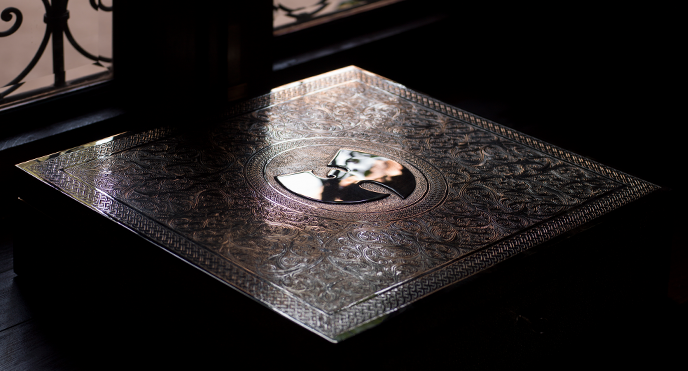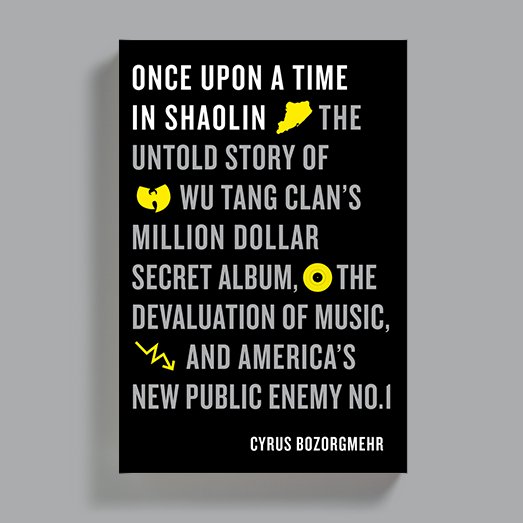By Cyrus Bozorgmehr

The first public photo of the album
There’s been a dualism at cultures’ core since time immemorial. On the one hand, the arts have always sought permanence; an expression of identity that cheats the touchstone of death. And yet the fleeting illumination of an immersive moment has always had a primal hold on human experience—that unleashing of emotion that can neither be documented nor repeated.
Physicality lies at the heart of this contradiction. The visual arts have always had one eye on the eternal—where cave paintings, sculpture, carvings and work in durable materials sing down through the ages, encapsulating some sense of the people who created them. But theatre, music, and oral traditions were always different, shorn of lasting form and rooted in immersion’s power.
Throughout Western history, painting and sculpture were guided by the permanence of the medium itself. Classical art harked back to the heroic age while the Christian tradition wheeled out the same set piece scenes again and again. Even as the Gothic morphed into the Renaissance, the narratives stayed constant and the new aesthetic invoked a monumental past. Architecture and sculptural form were key to Renaissance painting too—a meta-reflection on three dimensional weight.
The Dionysian vine that ran through music, dance and theatre was very different. It was about the surrender rather than the assertion of ego and thrived on the volatile fusion of the senses. People would come together to share an experience, and each individual energy fed into a whole greater than the sum of its parts. There was a feedback loop between artist and audience where performance drew its intangible magic from live interplay. We can read sheet music or Greek tragedies until the cows come home but even with that leap in knowledge, it’s impossible to imagine how a Shakespeare play or a Beethoven concert would have actually felt.
The industrialisation of permanence came in two principal waves. The printing press was a game changer, allowing music, plays and oral traditions to be blueprinted, and even though feeling could never be typeset, documentation stripped back layers of tantalizing mystery. Once the Enlightenment and the Industrial Revolution had pushed rationalism to the brink of a mechanised society, we began to see a pushback with movements like Impressionism that sought to capture an ephemeral moment. That moment was recorded in permanent form but the philosophy was always about that stitch in time—a confluence of elements into a single second. Modernism then set about deconstructing that second, viewing it from multiple angles and as the visual arts abstracted, the apparent dissonance of a permanent medium and a temporary flash of feeling began to reconcile into a whole new form of culture.
The second wave came with the invention of recorded music. Suddenly you didn’t need to attend a live performance or have any kind of physical connection with the musician and that democratization was hugely empowering to the generations that embraced it. Jazz, that freeform ode to an instant of intensity was a gloriously paradoxical player in this shift as live jams were documented. The musicians sought to create an ephemeral moment of improvised energy. And the recorder sought to etch it in stone.
The Twentieth century just about held this paradox together. Live music continued apace while the ability to own records allowed for direct connection from one’s own home. It would never be quite as visceral as a live show, but what it lost in urgency it gained in reflection. People could embark on epic emotional journeys from their living rooms and songs became both markers of memory and triggers for introspection. People began to treat records as they might do paintings or sculpture, collecting and displaying them as an expression of identity. Music’s permanent physical form had built a bridge to the epiphanies of the Dionysian tradition and for a moment there, we seemed to have the best of all worlds.
And then came digitality’s quantum leap. For all the extraordinary opportunity the hyper connected landscape has bestowed upon us, there’s been a price to pay. The advent of the camera phone changed the face of live experience, subverting the sense of surrender, and turning whole crowds into documenters so concerned with memorialising their experience that they forget to actually live it. The siren logic is clear—this is such a magical moment that I want something to remember it by. But it never quite works like that does it? The spell that makes it magic is instantly broken when you try to make it permanent.
The loss of music in physical form also stripped ritual from emotional engagement. There was no longer a tangible portal into another world and music became amorphous—permanently accessible and yet somehow far less substantial for it. The nature of experience began to change and music often became the accompaniment to other activities rather than an end in itself. The ubiquity of access that on paper seemed like such a breakthrough began to leak into a casual indolence. And all this as the changing economics of the music industry placed increasing value on live performance—but with so much at financial stake, those concerts became increasingly pre sequenced and sanitized.
A study published in the September 2014 issue of Psychological Science by Amit Kumar, Matthew Killingsworth and Thomas Gilovich demonstrates that people value purchases of experience more than objects. You can spend 5 grand on a car or 5 grand going down the Amazon for a fortnight, and despite the car lasting a lot longer than two weeks, the emotional rewards from the Amazon trip will resonate far more. Even as visceral experience is being tamed by a consumerist ease of access, people value it more than ever.
I had some first-hand insight into the paradox of permanence during the sole listening session of the infamous single copy Wu Tang Clan album, Once Upon a Time in Shaolin at MoMA PS1 in New York. All recording devices were checked at the door and every single person in the room knew that this might be the only time they would ever be able to hear a specific piece of music. So how does one react to that? Do you listen in meditative silence to try and record as much as possible into the memory banks or do you live the moment for all it’s worth. Watching the uncertainty echo through the space as people wrestled with the best way to engage was one of the most intriguing aspects of the whole project.
In a world where limitations are there to be overcome and everything is hardwired to our fingertips, we have to ask whether placing restrictions on time, access and context might make for a richer cultural fabric. Could limits actually enhance freedom? It’s deeply counter intuitive for a civilization so anchored in linear progress to sacrifice elements of that advance to regain something timeless, but as we drown in an embarrassment of riches, the question remains—do we need to unzip omnipresence to achieve transcendental moments of connection? As rituals change and the dopamine hits of the quickening resample reality into compressed bytes of data, how do we balance these twin, ancient poles and wring every last drop from our shared cultural experience?
Copyright © 2017 by Cyrus Bozorgmehr

Read an excerpt of Once Upon A Time In Shaolin: The Untold Story of Wu-Tang Clan’s Million-Dollar Secret Album here.
Cyrus Bozorgmehr is the author of Once Upon A Time In Shaolin: The Untold Story of Wu-Tang Clan’s Million-Dollar Secret Album, the Devaluation of Music, and America’s New Public Enemy No. 1 (on sale July 11th from Flatiron Books). He was the senior adviser on the Once Upon a Time in Shaolin project and worked alongside Wu-Tang Clan’s RZA and producer Cilvaringz. He lives in Marrakech.
Read more at Thought Matters. Sign up for originals essays, interviews, and excerpts from some of the most influential minds of our age.
